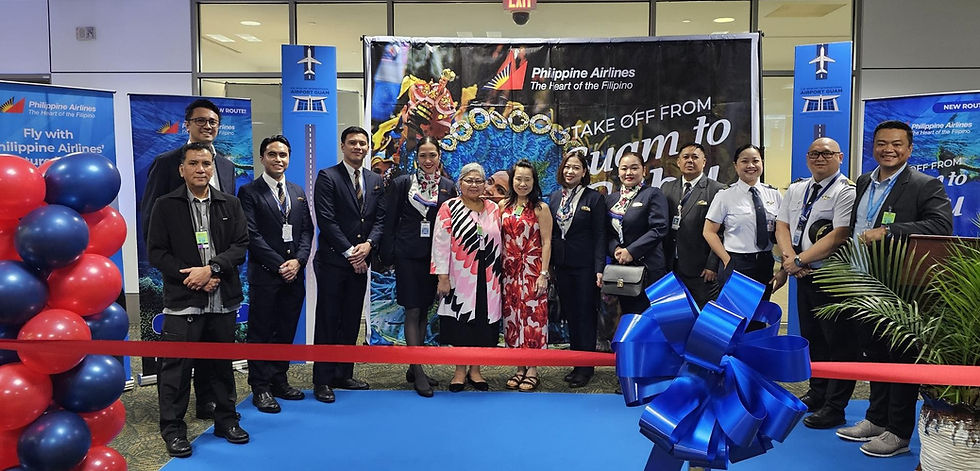One solution to Guam’s plastic problem could be a plastic solution
- By Jasmine Stole Weiss
- Sep 10, 2021
- 2 min read

Instead of stuffing Layon Landfill with plastic, or, alternatively, punting them to another country for an extra cost and increased carbon footprint, plastics #1, #2, #4 and #7 could be incorporated into a polymer that’s used to enhance modified asphalt binder for roads.
“Dow is one of the companies working on incorporating post-consumer recycled plastic into asphalt to create the next generation of sustainable roads,” said Julie Carver, founding principal and president of Congruent Environmental Strategies. Congruent is a subcontractor for Jacobs Engineering Group The companies are working with Guam Environmental Protection Agency on sustainable materials management.
Dow said it worked with Indonesia to complete the first plastic road trial in Depok. Indonesia is also one of the countries that Guam turned to when China stopped accepting recycled material. Dow worked with officials in India, Texas, and more recently, China, as well. Two polymer-modified asphalt roads were constructed in Freeport, Texas in 2019, according to Dow.
Last April, Dow also made polymer-modified asphalt roads using hard-to-recycle milk bottles in China. It was aptly nicknamed “Milk Bottle Road.”
For the United States, plastic roads are still a new idea, according to Carver. India constructed plastic roads two decades ago, she said.
“There are less than 10 of these roads that are being put in in the United States, roughly,” Carver said.
Guam is Dow’s “very first island that they’ve ever done it in, actually in the entire world,” she added. “That’s very exciting.”
Carver said they were able to leverage connections and get Guam on Dow’s demonstration project program for these plastic roads.
“The plan right now is, fingers crossed, they’re coming to Guam at the end of January to pave some asphalt,” Carver said. “It may end up being a parking lot rather than a road, but it’s the same principle.”
In the 2019 Guam Waste Characterization Assessment, Jacobs showed plastics make up about 25 percent of the material in Layon. Most of the plastic sent to the dump on the island are #7 plastic, plastic film, or “other,” according to the report. Guam’s landfill with its 25 percent plastic trash, is more than 19 percent of the plastic that comprises landfills in the U.S. on average, the report showed.
In addition to diverting plastic from the landfill, another benefit could be more durable roads.
Cory Hinds, project manager for Jacobs’ sustainable materials management contract, said Dow has run tests.
ADVERTISEMENT

“The testing that Dow has done in their lab has indicated that the properties of the asphalt are going to be enhanced by the addition of Dow’s polymer with the post-consumer recycled plastic,” Hinds said. “This is not something that is going to be just marginally ok. The properties of this asphalt, once it’s laid down, are going to be better than the standard asphalt in Guam’s road projects.”
The goals of the project are to confirm this can be done in Guam’s hot and humid climate and reduce the amount of waste that goes into Layon, Hinds and Carver said.
Guam is an island that has limited land space, which would make it prudent to extend the life of the dump for as long as possible.
Being able to also divert plastics from the landfill would further extend the life of the landfill, according to Carver and Hinds.
Subscribe to
our digital
monthly edition






